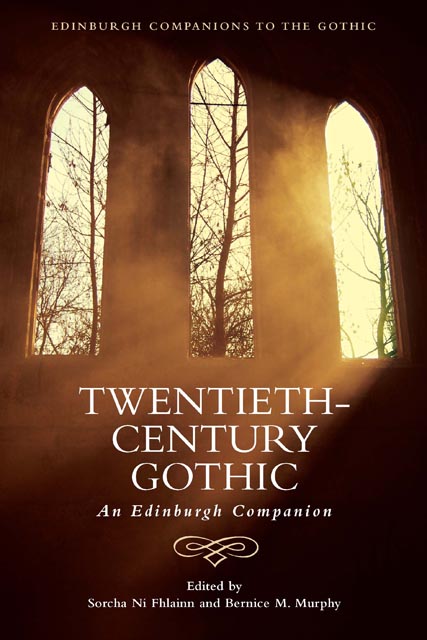13 - Masks of Sanity: Psychopathy and the Twentieth-Century Gothic
Published online by Cambridge University Press: 18 November 2022
Summary
Gothic and horror fiction has long been fascinated by individuals whose apparent lack of empathy and refusal (or inability) to adhere to conventional social norms and moral constraints means that they are capable of deeply transgressive acts, up to and including murder. As Kurt A. Kiehl observes, while the German psychiatrist J. L. A. Koch
is credited with coining the term psychopastiche, or psychopath (meaning ‘suffering soul’) … Psychopaths, under a different label or terminology, captivated attention long before Koch. Indeed, since humans first evolved, history has recorded stories of humans who display what we now understand to be the disorder of psychopathy.
Edgar Allan Poe, who so often penned first-person narratives recounted by protagonists experiencing extreme and unreliable mental states, also created one of the most chilling nineteenth-century portraits of what we would now recognise as probable psychopathy. In ‘The Cask of Amontillado’ (1846), the narrator, Montresor, recounts how he had long resolved to ‘punish with impunity’ a rival named Fortunato who caused him grave (but unspecified) offence. Knowing that Fortunato thinks of himself as a connoisseur, the narrator lures him to his family vaults on the pretence of having him sample a cask of Amontillado wine. Once there, Montresor chains Fortunato inside an alcove, and then walls the man in, impervious to his desperate cries. The final lines underline Montresor's satisfaction: ‘Against the new masonry I re-erected the old rampart of bones. For the half of a century no mortal has disturbed them. In pace resquiescat!’
Like several of the other fictional psychopaths referenced in this chapter, Montresor's actions are additionally troubling because he gets away with his crime. Although he clearly experiences the confessional impulse also felt by the narrators of ‘The Tell-Tale Heart’ (1843) and ‘The Black Cat’ (1843), he is an altogether more collected figure. The façade is so convincing that even Montresor's victim has no inkling of danger until his fate – like the recess in which he has been chained – has been sealed.
In his pioneering 1941 volume The Mask of Sanity: An Attempt to Clarify Some Issues About the So-Called Psychopathic Personality, psychiatrist Hervey M. Cleckley stated that psychopathy could be distinguished from more ‘orthodox psychoses’.
- Type
- Chapter
- Information
- Twentieth-Century GothicAn Edinburgh Companion, pp. 213 - 227Publisher: Edinburgh University PressPrint publication year: 2022



